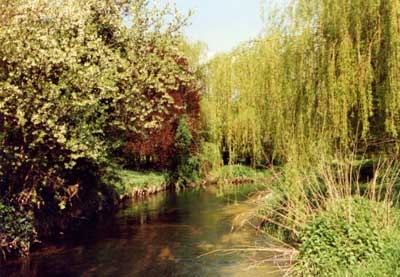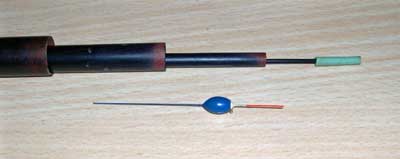| MARK WINTLE |
| Mark Wintle, an angler for thirty-five years, is on a quest to discover and bring to you the magic of fishing. Previously heavily involved with match fishing he now fishes for the sheer fun of it. With an open and enquiring mind, each week Mark will bring to you articles on fishing different rivers, different methods and what makes rivers, and occasionally stillwaters, tick. Add to this a mixed bag of articles on catching big fish; tackle design, angling politics and a few surprises. Are you stuck in a rut fishing the same swim every week? Do you dare to try something different and see a whole new world of angling open up? Yes? Then read Mark Wintle’s regular column. |
Wintle’s World of Angling – Memorable Matches Part 1OVER THE NEXT few weeks I am going take a look at some of the more memorable matches that I’ve fished over the years. I’ll look at the background, what happened during the match, and lessons learnt. My match career spans back to 1969, and in that time I won, and was placed in, many matches. As any experienced match angler will tell you, winning a match can often be as straightforward as drawing a good peg and fishing it well. The much more interesting days are when you get a decidedly average peg and make some inspired choices, or even accidental ones and come up with a result against all the odds. This first article in the series is about a week’s holiday at Oxford back in the early eighties. At that time I used to stay with an uncle and aunt in the village of Wolvercote just to the north of Oxford, coincidently the home village of Peter Stone, usually staying there for a week in July and September, and it is in July that these events happened.
To gain access to the waters in the vicinity I would buy a North Oxford AS annual ticket on arrival on the Friday evening (still going strong and offering excellent value for money at £ 20 a year). I noticed in the book that there was a friendly match on the Sunday at Carrott’s Ham against Charlbury, and booked a ticket. At the time I didn’t know where Carrott’s Ham was, only that it was upstream of nearby Godstow. I reckoned that being out fishing on the Saturday I would eventually speak to a local who could tell me where the draw was. And so it proved, but it was only during the evening whilst tench fishing a lake in Wolvercote that I finally found out where to go. Earlier in the day I’d caught fifteen pounds of roach on the Saturday on stickfloat and caster from Medley and thought that I had a potential method for the following day’s match. A good turn-out on the ThamesBleary-eyed, I followed the other anglers the following morning at 5:30am to the draw on the river bank. For early July it was cool, grey and still, and predicted to stay that way. There was a good turnout of 55 anglers and we were soon making our way to our pegs. Mine was not far from the draw at the downstream end of a forty yard length of bulrushes. The match secretary had the peg at the upstream end. I decided to ask his advice before getting ready for the match. I asked him what sort of depth I had for the stickfloat – he suggested six feet and gave me a quizzical look. I explained that I’d caught well downstream at Medley the previous day fishing caster on a stickfloat and fancied doing the same again. He replied that he thought bream would win on the feeder, but further upstream. I returned to my peg and tackled up a stickfloat set to five feet. In those days I rarely plumbed the depth, figuring that I’d soon find out how deep it was. The whistle went and I cast in a couple of rod’s length out, feeding some hemp and caster. The float trotted down a yard in the sluggish flow and disappeared. It was a chub around two-pounds, a good start. Five minutes later I had another one the same size. Playing this second fish I couldn’t help noticing that the depth seemed more than five feet but continued at the same depth. In the next half hour I had two more chub, again around two pounds before it went quiet. I decide to plumb the depth; it was twelve feet deep, and I’d had the chub at less than half depth. Over the next four hours I searched the swim diligently, eventually finding a few small perch and gudgeon at full depth, finally getting another small chub less than a pound in the last few minutes. I guessed my weight at low double figures but I was short of that with just over nine pounds – the chub were on the lean side. But it was easily enough to win, and several weights around five pounds took the rest of the frame. My win had an impact though. Who was this angler from Dorset who’d only just joined to win the biggest cup match of the year? The following Sunday there was another 50 peg match this time against an Oxford match group on the adjacent Seacourt stream that we’d crossed to get to the draw. I was invited to turn out for North Oxford, and as I was still there on holiday I agreed to fish.
In the draw queue again, this time on Seacourt streamThe week soon passed and so I found myself in the draw queue once again. By then several members had made my acquaintance and it felt good to be accepted by the club. When I drew peg 5 on the Seacourt there was a cheer; I’d got the worst peg in the bag it seemed and it was only because of the full turnout that it had been left in. The pegger told me it was not much more than a foot deep, full of weed and good for a pound of bits at best – hardly worth the walk. Somewhat defensively I said that I’d paid my pools and drawn my peg and intended trying to see what I could catch from it. Arriving at the peg it was plain that it was as bad as it looked, although a tiny run down the far bank just fifteen feet away held some promise alongside the rushes. There were tiny runs in the patchy weed though it was hard to see how to fish it. I set up one rod with a tiny stickfloat, banking all my hopes on catching chub from the run. No other anglers were in sight as the peg was halfway down a hundred yard straight with the next peg in either direction beyond the next bend. I was more or less pleasure fishing, me against the peg. With no chance of winning I was determined to extract something from the peg. The whistle went and I began trotting the run. It was only about ten feet long, very narrow, and seemingly fishless. After twenty minutes some bleak began to top about twenty yards downstream, possibly to the odd floating casters that were drifting down. Abandoning the non-existent chub I tried to catch the bleak. Patient feeding brought them upstream but the match rod and stickfloat rig was too clumsy for the shallow water. Worse, the clumps of weed hindered bait presentation. By now the match was an hour old and I had three bleak in the net. It was time for a re-think. Taking the top two sections of my pole (Garbolino SLV) that had a flick tip (it was 1982) would give me a seven foot whip that could be rigged with a canal float taking just one no. 8 and one no. 10 plus a 22 hook; that would give me the delicacy of presentation that the swim was crying out for. But how to defeat the weed was the problem.
I took a weed cutter and screwed it into the landing net pole, and cut a little channel down the middle of the swim. Muddy water drifted downstream, but it was do or die by now. It soon proved a big improvement and I finally started to catch bleak steadily plus some small dace. At last I was starting to enjoy fishing the swim in the warm sunshine. As I continued to build the swim over the next couple of hours, gudgeon and even roach turned up but it was mainly bleak and dace. As the fish got shyer I realised that I needed to fish a little further out and tackled up an eleven foot bleak whip with an identical rig to the other whip. I was still unhappy with the weed and cut another channel in the weed a little further out. It didn’t seem to kill the swim; if anything it got stronger each time. Alternating between swims leads to another winWith two whips set up I could alternate different areas of the very confined swim. More dace were showing and I was starting to realise that five pounds was on the cards. With less than an hour to go three anglers wandered up from downstream, including the local tackle dealer who I’d got to know that week. It was fishing terrible they said. None of the chub swims had produced and five pounds would likely win – what had I got? I replied that I thought that I’d got five pounds and was still catching. The swim continued to get stronger in that last hour; a couple of skimmers showed and I lost a bream that I’d seen working up the swim. The scale soon told the truth – six and a half pounds – 165 fish. It was enough for the second week running; another flurry of five pound weights where it was tales of chub hooked and lost – no fewer than five chub pegs were blown out. This win impressed more than the previous week. Those that saw the peg couldn’t believe that it was possible to extract that sort of weight from it but I suppose an open mind and determined approach can sometimes work miracles. Those two matches taught me a lot; that chub could be caught up in the water, that you don’t have to follow the crowd, don’t believe everything from a peg’s previous form, that once in a blue moon a truly bad peg does win a match (the only time I ever did it), and that even the fliers get cocked up. I returned that September and fished another match on the Seacourt. There was no repeat performance, and all the chub pegs produced their form weights of double figures. Next time I’ll look at how I learnt to catch chub in matches on the Dorset Stour. |
















